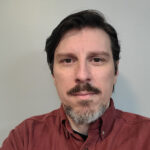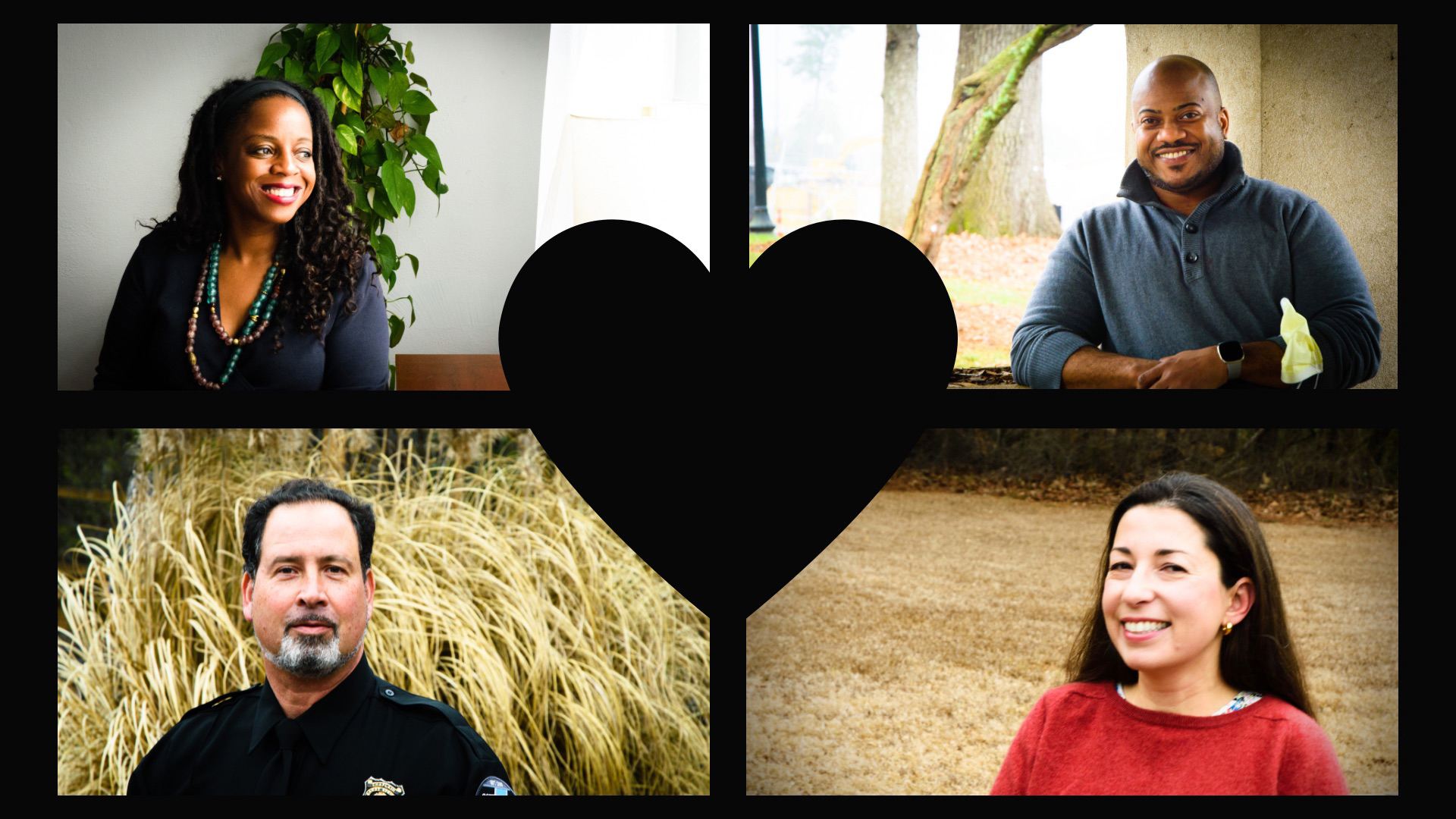
In Moments of Need and Crisis
Religious affiliation is falling, even in the God-haunted South. But chaplaincy is booming in hospitals, schools, prisons and other institutions. And it’s teaching us how to reach across barriers of faith.
As a chaplain at a major Atlanta hospital’s cancer center, Raymond Walker III describes a key part of his job as meeting patients in “that spot that we all will probably one day come to: ‘What have I done with my life?’”
“Being able to sit with someone through that moment, through that feeling, through that experience, is a holy place,” he says. “It’s a place that you might get to if you're really close friends with someone. You might get to it if you just happen to be in the right place at the right time. You really get to it when you’re a hospital chaplain.”
That world-straddling role between the holy and the secular, the technological and the spiritual, the sacred and the profane, is drawing many an existential quester to the chaplaincy. So is the sheer variety of working as a spiritual counselor in a secular institution, where specialties include the military, police, sports teams, hospitals, schools and prisons.
Those features make the job uniquely suited not only to defy, but indeed to be fueled by, a national trend of sharply declining religious belief that is even loosening the buckle on the South’s Bible Belt.
A boom in chaplain training enrollment is underway, with added momentum from the media attention the job got in hospitals during COVID-19’s early days. That training is increasingly pluralistic as chaplaincy moves ever farther from its roots in volunteer Christian pastors who often focused on proselytizing. In turn, that has built tensions over if and how much the chaplaincy should professionalize – and even if the practitioners should be called “chaplains” anymore.
Danielle Tumminio Hansen is a professor at Emory University’s Candler School of Theology who teaches courses for a chaplaincy concentration in the master's degree program.
“What I think has shifted in … the past five years or so and maybe even accelerated in the pandemic is the number of individuals who want to become chaplains, because they are either uncomfortable being ordinanced [made a clergy member] in their own tradition or are uncomfortable with authority,” she says.
"As the number of people affiliated with congregations declines, chaplains are becoming the only religious leaders some people have contact with."
The dynamic between decreasing religious belief and increasing pursuit of chaplaincy is “definitely the case nationally,” says Wendy Cadge, a Brandeis University sociology professor who in 2018 co-founded a program called the Chaplaincy Innovation Lab (CIL) to address the changing times and needs.
“About one-third of theological schools have started degree programs with ‘chaplaincy’ or ‘spiritual care’ in the titles,” Cadge says.
Population-wide religious belief is a slippery thing to measure, but the work of the Pew Research Center (PRC), a think tank in Washington, D.C., is broadly trusted. By the PRC’s 2020 estimate, about 65 percent of Americans (children included) identify as Christian, while 30 percent were unaffiliated or “nones,” and adherents of all other faiths were about 6 percent. That’s a big and steady shift from the 1990s, when around 90 percent identified as Christian and “nones” were only around 5 percent.
And it’s a trend the PRC projects to continue over the next 50 years. The research center’s models have Christianity dropping to between 35 and 54 percent; “nones” rising to between 35 and 52 percent; and all other faiths combined at least doubling, in part because of immigration.
The South is still tracking above average, dominating the PRC’s list of states where people identify as “highly religious.” (Alabama and Mississippi topped the list at 77 percent.) The PRC in 2014 estimated Southern adults were 76 percent Christian, 19 percent unaffiliated and 4 percent everyone else, though it later said the “nones” were probably under-reported. But even the South’s numbers are tracking downward, amid changing mores and a rapidly growing and diversifying population.
The trend has decimated the ranks of clergy. Those inclined toward a religious life in the new generation may share a distrust of the institutional version and definitely do not relish the idea of preaching to empty pews. Chaplaincy, on the other hand, has the advantage of already operating independently in the secular world among people of different or no faiths.
“Diversity and pluralism is the everyday expectation for many more chaplains than it is for congregational clergy,” says Michael Skaggs, a historian of religion and co-founder of the Chaplaincy Innovation Lab. This is especially true, he says, among those who work in varied places like colleges or the “hyper-liminal” world of airports. “Chaplains in these places have very little expectation that the people they serve will be ‘like them’ in religious identification,” he says.
Many chaplain training programs have kept up with the need for diversity, such as those of the U.S. Army and Air Force — based in South Carolina and Alabama, respectively — and the Georgia-based Association for Clinical Pastoral Education. New programs like the CIL have sprung up to conduct research and trade ideas from a pluralistic approach.
“We thought chaplains who work in different places — the military, healthcare, higher education — would have things to learn from one another and wisdom to share,” says CIL co-founder Cadge. “Also, as the number of people affiliated with congregations declines, chaplains are becoming the only religious leaders some people have contact with. We wanted to support them in doing that work.”
In some quarters, having a religiously diverse chaplain staff is now the norm, and the “nones” may even find representation among a small group of humanist and atheist chaplains. Whether “chaplain” — originally a Christian term — is appropriate for everyone in today’s chaplaincy is also up for debate. Whatever you call it, chaplaincy still distinguishes itself from other counseling by avoiding diagnoses and goal-oriented advice in favor of aiding a personal quest for meaning.
While clinical training and certification programs are growing into a norm, there’s no one place agreed upon to offer it, says Tumminio Hansen. After all, the diversity of faiths also means there’s no authority controlling all of them.
“The definition of ‘chaplain’ can be a pretty fuzzy term, because there isn’t really anything that would keep an average person on the street with no theological background at all from hanging up a shingle and calling themselves a chaplain,” she says.
Some chaplains have discomfort with training programs and academic courses, says Emory’s Tumminio Hansen. And there is still a faction of old-school evangelical chaplains “much more interested in converting people,” she says.
Some things haven’t changed about chaplaincy. It’s typically a high-stress, low-pay job filled by idealists on their own personal journeys. Careers all too often end in burnout, which could counterbalance the current boom. Here in the South, the entwined legacies of racism and conservative Christianity confront chaplains. I talked to four current and former metro Atlanta chaplains — some from the new generation, some from minority religions — to hear what called them to this transforming and transformative job and how they serve others while keeping their own faiths.
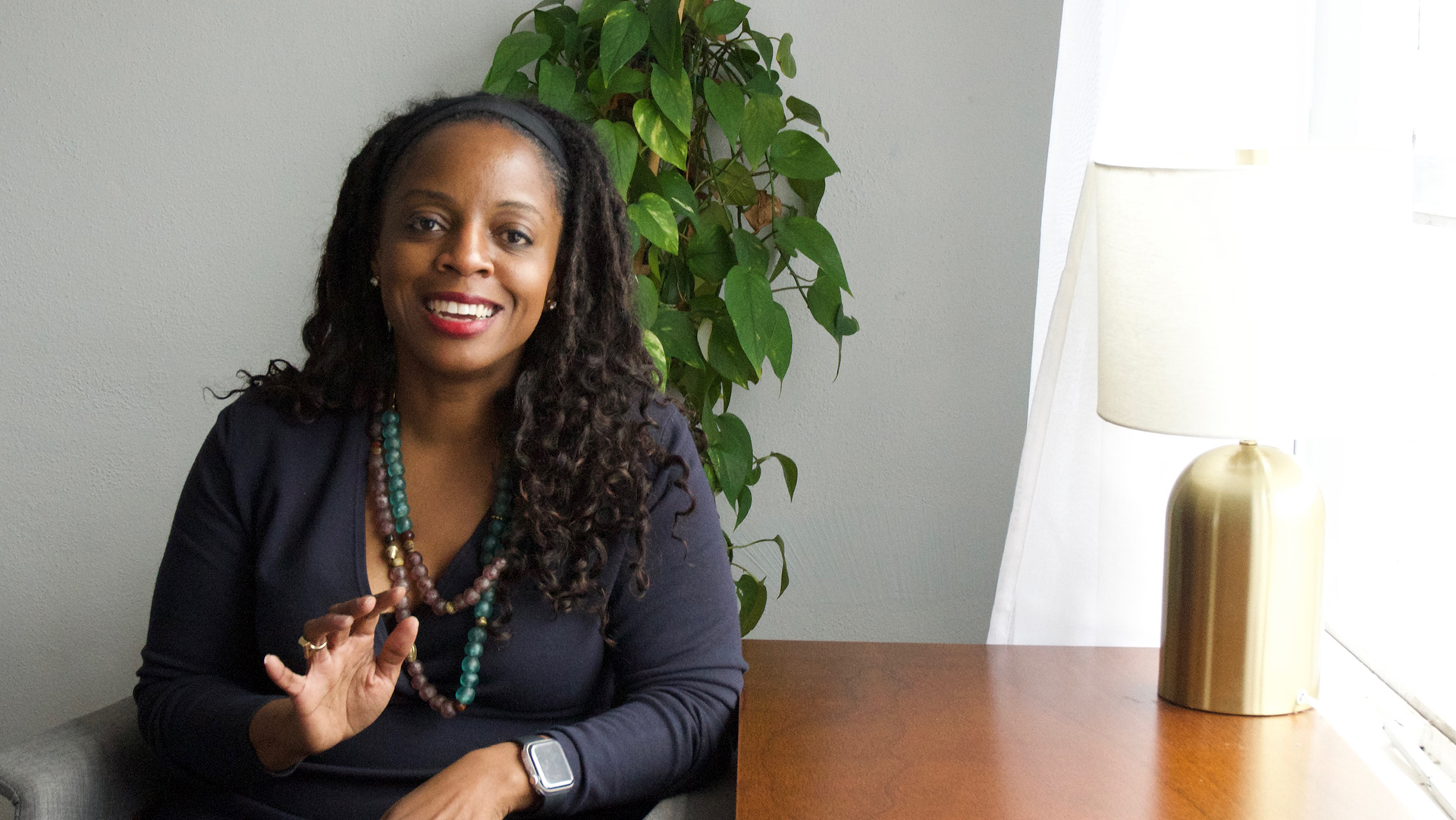
Zeena Regis
Like many chaplains, Regis took a circuitous route to the calling, starting off as a community organizer in Lexington, Kentucky.
“I really like to talk about the synergy between our faith and how we show up in the world around justice issues,” she says.
And like many, she recently left the profession, wrapping up a decade of work in hospices to work as a clergy liaison at a nonprofit focused on end-of-life policies called Compassion & Choices. She notes that in the hospice world, the chaplains are often paid even less than the social workers.
Perhaps not coincidentally, Regis was a military brat whose early religious instruction came from the Air Force’s multidenominational chaplains. When her own religious calling came, she affiliated with the Presbyterians, but did not want to go the clergy path.
“I just couldn’t see myself being part of the institutional church. I don’t want to talk [only] to people who believe the same as me.”
“I just couldn’t see myself being part of the institutional church,” Regis says. “I don’t want to talk [only] to people who believe the same as me.”
As a Black woman in the South, she also wasn’t sure she’d have an alternative anyway. She says she was told early on that her race and gender would present a double challenge in finding a job as a Presbysterian Church pastor.
Regis started work as a chaplain in a state transitional center for women prisoners, then moved into the hospice field, and says she loved both. She speaks with enthusiasm about engaging with the likes of humanist chaplains.
She also saw both sides of some of the profession’s training disputes.
“The standards for hospice chaplains are kind of the wild, wild West,” she says, describing them as improving but still lower than most hospitals’ standards. “It really is this movement to clean up the profession. … I would hear horror stories of chaplains who were there to proselytize, who were preachers who wanted to make sure everybody was saved before they died.”
On the other hand, she saw chaplains wary of institutionalized certification programs and even the job title, which is “a loaded term for a lot of people” because of its Christian roots. Some prefer “spiritual counselor” or “spiritual care coordinator.” For her part, Regis says she was never asked in job interviews if she was ordained and sometimes not even her affiliation, and she doubts if chaplaincy’s demands required the master’s degree in divinity that she holds.
Institutional and cultural stereotypes still die hard.
“Often I hear, ‘You don’t look like a chaplain,’” says Regis. Older white patients would often bring up race and racism with her, either with patronizing sympathy or “very clumsy, very cringey” questions rooted in racist tropes about Black families and neighborhoods. She was surprised race was on people’s minds in their last days of life. She wonders if it was driven by “existential angst” over the sins of racism, or the attitude that “I got nothing to lose” by asking.
While Regis is committed to the modern chaplaincy’s pluralism and taboo on preaching, she inevitably ran into patients and family members whose views fundamentally conflicted with her own.
“I had lots of people that held beliefs I don’t hold about hell,” she says, recalling in particular a woman who feared her dying brother was damned because he was gay. “I remember him specifically because he was such a kind person. His room was full of visitors because he was known in his neighborhood as, like, ‘If you need something, call him.’ And so, when we talked through his kindness, at one point [his sister] said, ‘He’s nicer than I am. He’s a better person than I am.’ She really wanted me to assure her he was going to heaven. So it was hard to me, because my belief system was like, ‘Girl, what?! He’s not going to hell because he’s gay!’” But with “gentle questioning,” Regis says, she helped the sister “through her own belief” and fear.
“I would love to say I’m completely impartial,” but her focus is “on the grace side of the Bible,” says Regis. “We’ve ceded so much of Christianity to the right and … to more conservative interpretations.”
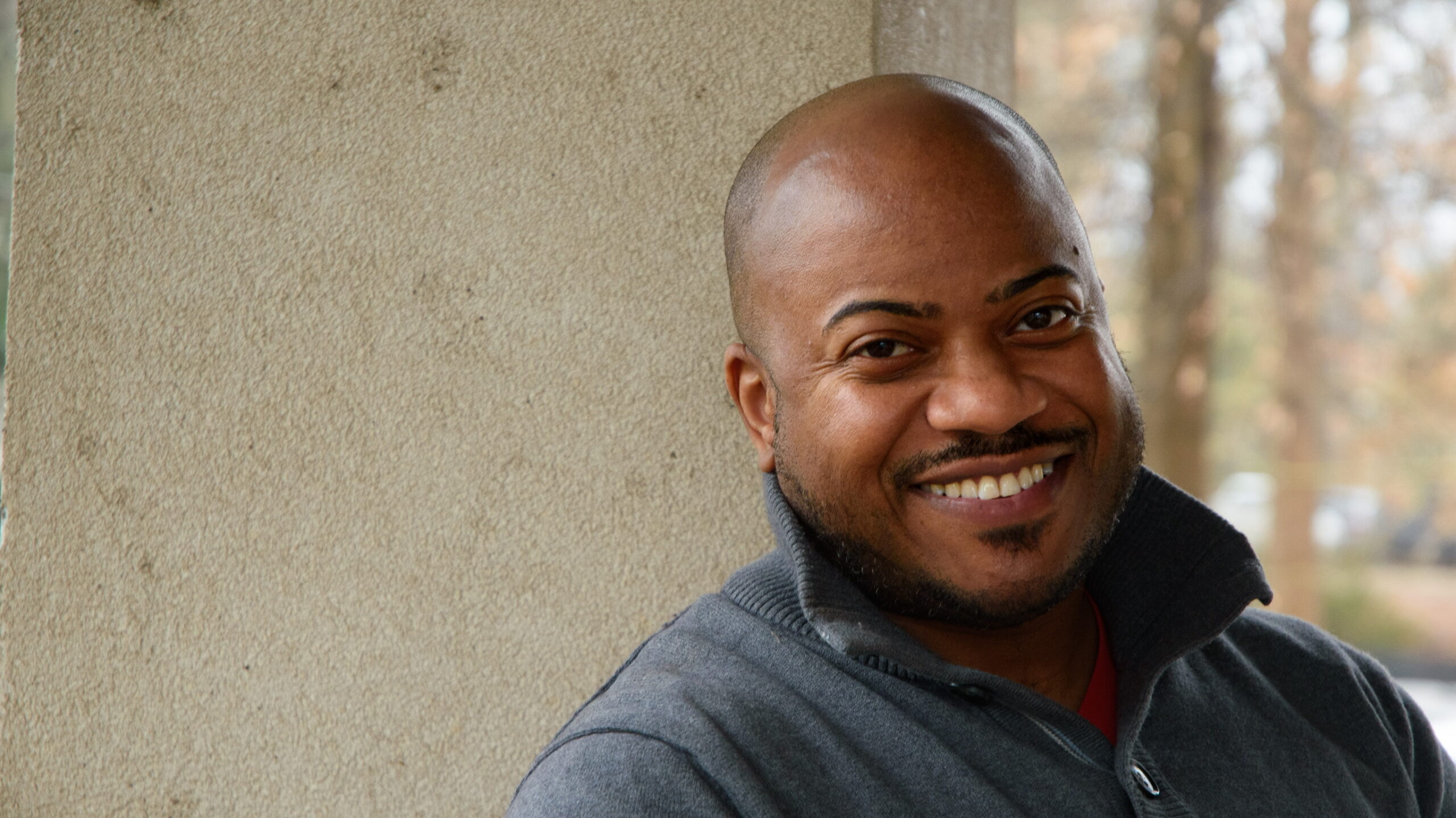
Raymond Walker III
Walker was a software engineer drawn to the clergy when he became pastor of a nondenominational Georgia church about 14 years ago. He pursued training whose requirements included a clinical pastoral class, which he did in a hospital — essentially performing chaplain work.
“And then it was like finding a partner that you didn’t know you had,” he says, finding himself fulfilled by helping people in moments of need and crisis.
Today, he’s a part-time chaplain at the Winship Cancer Institute of Emory University – where he doubles in a secular job as a process improvement specialist – and at Children’s Healthcare of Atlanta.
Walker is still pulled toward clergy service – he’s working toward being ordained as an Episcopal priest. But even there, he talks with a chaplain’s enthusiasm about the parts of that world that have blurry boundaries, like the “in-between times” before and after church services where people pull him aside to ask for prayers.
"Shrinking the room down to whether I’m able to save your soul or not does a disservice to the people you're serving. Because in that instance, the chaplain is serving their own needs instead of the needs of the person in the bed.”
“What continues to draw me to the church, even in the space of folks moving away from the organization of it all, is that … there is this wonderful disorganization of who we are and what we do as the capital-C Church, within the walls and outside of the walls,” he says. “If church is the gathering of people … then everywhere that I go – everywhere that we all go, really – is [church].”
Walker comes from a family of preachers, teachers and performers. One sister is an elementary school educator; another is Divinity Roxx, a star musician known as the bassist and music director for Beyoncé.
“My sister actually has a song called ‘Break Down These Walls,’” Walker says, whose lyrics are personal, but can be read from the bigger picture of, “break down the walls of the system … we are here to serve all people in all places.”
Walker is a firm believer in modern chaplain training, especially on the crucial avoidance of proselytizing.
“If someone’s upset about a broken limb and not [being] able to play baseball anymore, I don’t know if that’s a situation where you want to lead with, ‘Well, do you know that little Lord Jesus is your savior?’” he says. “I think … shrinking the room down to whether I’m able to save your soul or not does a disservice to the people you're serving. Because in that instance, the chaplain is serving their own needs instead of the needs of the person in the bed.”
And conversion-obsessed chaplains are not always only from the old school.
“You’d be surprised,” he says. “It’s a mixed bag. It’s a wonderfully mixed bag.”
On the other hand, almost all chaplains are religious believers at their core. How does Walker handle situations that fundamentally conflict with his belief — say, an atheist patient in their last moments?
“I very much believe in a God that’s bigger than what we believe… and I don’t know what’s inside each person, but God does,” he says, also noting that even the disciples of Jesus in the Christian Bible were religious doubters. From that perspective of religious mystery, he might pray — to himself, not aloud — to “let light perpetual shine on them … whatever that looks like. Because as far as my understanding goes, they've been doing that already while alive. They’ve been living the light and grace of God.”
Of course, many patients are happy to have a religious figure available.
“I had a young lady who requested that I come at the beginning of every chemo treatment so she could pray over the medicine before she got started,” he recalls. Those interactions can come with some regional flavor: “In the South, people have a tendency to apologize for cursing in front of a chaplain,” he says with a laugh.
Walker worked in the dark days of the pandemic, when chaplains got a renewed spotlight among the other healthcare employees in the apocalyptic situation.
“I wouldn’t have traded it,” he says. “There’s these really vivid memories of being able to be with people who couldn’t have anybody else with them.”
The attention-getting work with patients and their families had its tough moments, especially when chaplains had the role of ushering out loved ones when those with COVID were sent to the ER. The lesser-known aspect, Walker says, was an amped-up version of chaplains’ role in counseling the healthcare workers themselves through the celebrations of lives saved and the mourning of those lost. As figures who straddle worlds, chaplains can be seen as a little apart from the institutions they serve; one small but significant legacy of the pandemic in that regard, Walker says, is chaplains earning the long-requested right to wear hospital scrubs, a practical move that also suggests a closer embrace of their service.
The sheer amount of fatalities was, of course, a challenge for everyone, though healthcare is a profession where death is a daily reality. But chaplains have their limits. Walker says he had learned to manage his shifts at the children’s hospital. “I came to the conclusion I could do about three deaths before I had to call an adult and go home,” he says. “It can be difficult, yeah. But something my sister told me when I was in school was that if it weren’t difficult, everybody would do it.”
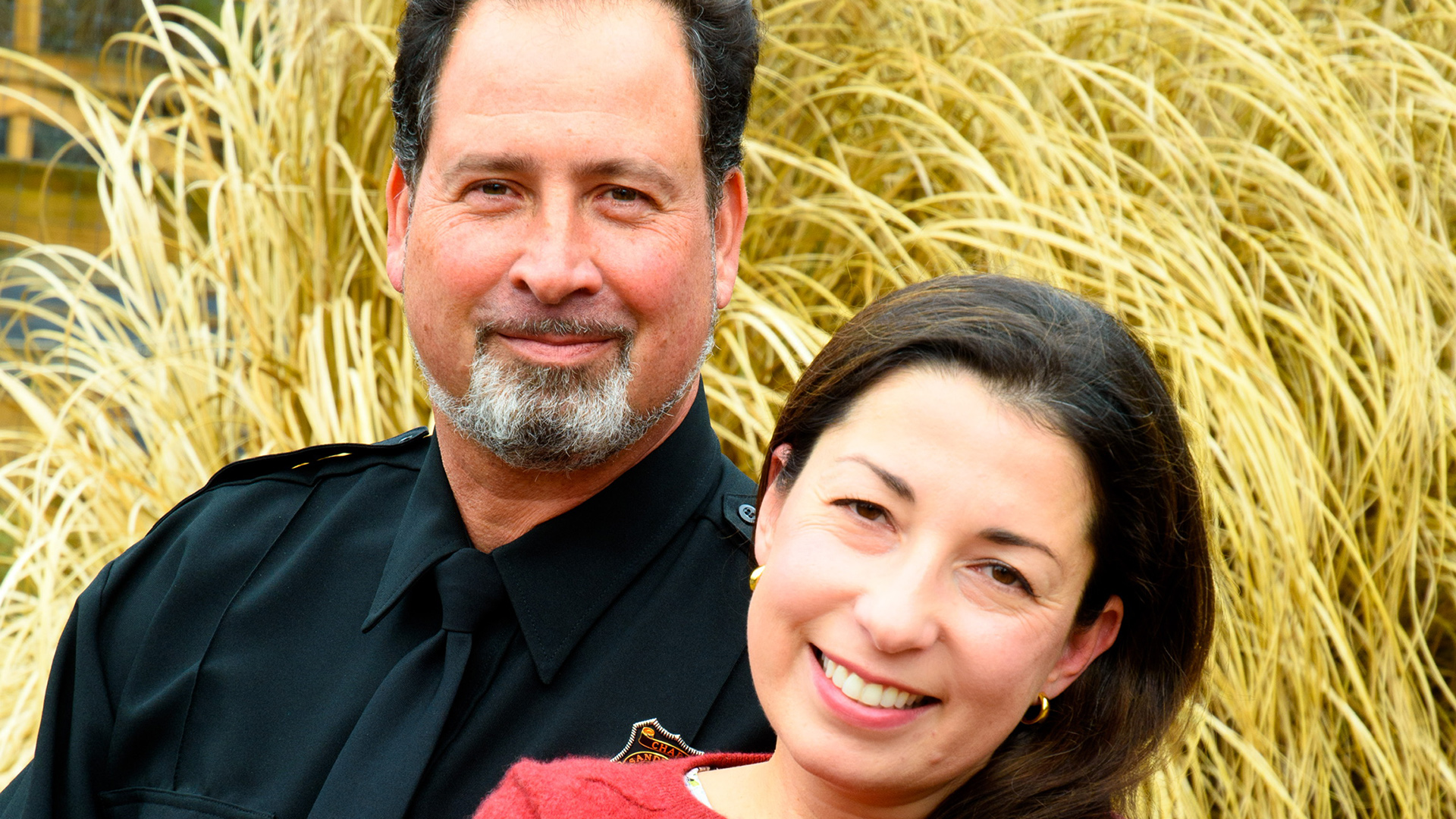
Spike and Marita Anderson
The Andersons are a husband-and-wife team with a long history in chaplaincy. He’s the senior rabbi of a large Reform Jewish congregation who volunteers as a police chaplain. She’s a longtime hospital chaplain who just began a break to center on family life.
“Honestly, I think it’s a gift for our marriage,” says Marita, noting the centrality of Jewish spiritual life in her family. Then again, when the couple comes home from work like the chaplaincy, “There’s a lot of gallows humor. You kind of have to use humor, and a lot of moments of quiet, of actually not talking about it.”
Spike once came close to hospital chaplaincy himself and says he sympathizes with Marita’s work as harder than the police and military versions.
“That’s a really tough job to do and then sort of move on to the rest of your day or the week,” he says. Coping with those demands, he says, is addressed in today’s chaplain training. “It's called, how do you keep a raincoat on, so it doesn’t get on you? How do you do the job and not succumb to the depressions that you would think naturally come with it?”
Both of them took unconventional journeys to religious life. Marita graduated college in 2001 and, deeply affected by 9/11, went into counterterrorism policy work before facing the personal catastrophe of her father’s suicide.
“I went into chaplaincy as sort of a wounded person, which often happens with chaplains. You go into it because you have existential questions and you want to understand human experience, and you hope to have some insight that you could share with others.”
“So I went into chaplaincy as sort of a wounded person, which often happens with chaplains,” she says. “You go into it because you have existential questions and you want to understand human experience, and you hope to have some insight that you could share with others.”
Spike went from Boston’s suburbs to Silicon Valley’s dot-com era tech startups before seeking the spiritual life in a Jewish seminary. He undertook extensive hospital chaplaincy training, learning how to talk about Judaism in interfaith forums and befriending a Jesuit priest who mentored him. That training, and he says, taught him more about his faith than some seminary programs. He says he strongly considered sticking with the chaplaincy before deciding the clergy offered more variety — and better pay.
Spike’s first position as a rabbi was at a temple in Los Angeles, where Marita was working in such prominent hospitals as Cedars-Sinai. As a couple, they headed South in 2015 when Spike got his current position at Temple Emanu-El, a 3,000-member congregation in Sandy Springs, a suburban Atlanta city with one of Georgia’s largest Jewish populations. Marita began working in metro hospitals.
Marita says that coming South has been an “amazing education” and a “real learning gift” in the diversity of culture, socioeconomic status and faiths. The move — and the chaplaincy — suited her as an immigrant who came from Ukraine in 1990.
“I always feel like I’m out of place because I didn’t grow up in this country,” she says. “I’m just, like, ‘other,’ and being able to connect with other people on this very intensely intimate level. … It’s really fun. It’s very hopeful.”
In 2018, Spike began volunteering as a chaplain at the Sandy Springs Police Department, a way to give back as a “civically minded guy.” Many of the duties are ceremonial, but he does counsel officers in “home issues” and existential questions: “How does my work reflect who I am? How can I do my work better? How do I get back to the ideals of why I got into this work?” He was still pretty new to the job when those questions took on new meanings amid the Black Lives Matter protests that followed the 2020 Minneapolis police murder of George Floyd.
Spike and Marita are firm believers that chaplain work should be interfaith and avoid old-school proselytizing.
“I’m not sure that’s even [yet] old-school,” says Spike, citing talk he’s heard of evangelizing in the military. Unlike a pastor, he says, the chaplain’s job is to meet people where they are rather than “leading them from A to B. Which is both inviting and also very limiting.”
Marita says she typically avoided tipping patients or staff to her own affiliation.
“I do think that there’s something that happens with people if they know you don’t have a collar like the Catholic priest or you’re not wearing the kippah of a rabbi, that you’re not necessarily representing a faith – you’re representing the human experience,” she says. “Otherwise there's so much performance that happens. Like if a Catholic priest comes into a room and you’re Catholic, there’s so much pressure to act in a certain way or be something.”
As members of a minority faith in a traditionally Christian profession, they also face unique challenges and opportunities.
“Chaplaincy is relatively new in the world of Jewish spirituality,” says Marita.
On the Sandy Springs Police force, Spike is a newcomer working alongside a veteran chaplain affiliated with a Southern Baptist megachurch. He’s aware of the significance in a town with a big Jewish population, though the force has only two Jewish officers out of over 125.
“I may be sort of a symbolic Jewish presence,” says Spike. “But even if that is the case, I applaud the city and the police for doing that. I don’t mind being the visible Jewish presence in the city’s civic arena. I’m OK with that, and it’s very forward-thinking of the city to do that. I never feel like a token Jew.”
Marita says she sometimes faced outright antisemitism from patients — something chaplains are trained not to take personally when it comes from the distraught. Jewish chaplains may find patients attempting to convert them — an experience Marita has gone through.
“She really felt this was her mission in life, to bring me to Jesus and her personal truth, Truth with a capital T,” Marita says.
On the other hand, Marita says, “I sometimes would out myself to non-Christians, because it put them at ease. If you’re a minority facing another minority, you’re less threatened.”
As Marita ponders whether her break from the chaplaincy will be temporary or permanent, her thoughts on the job go to the heart of its modern shifts.
“It’s a changing world,” she says. “I do believe there’s a lot of room for universal spirituality. And I’m also very proud of my own individual faith. So I’m not suggesting we should all be universally spiritual. … But I do think we have the capacity to care for each other across faiths. And the idealist in me sees so much potential in that. How that plays out in real life, sometimes I wonder.”

